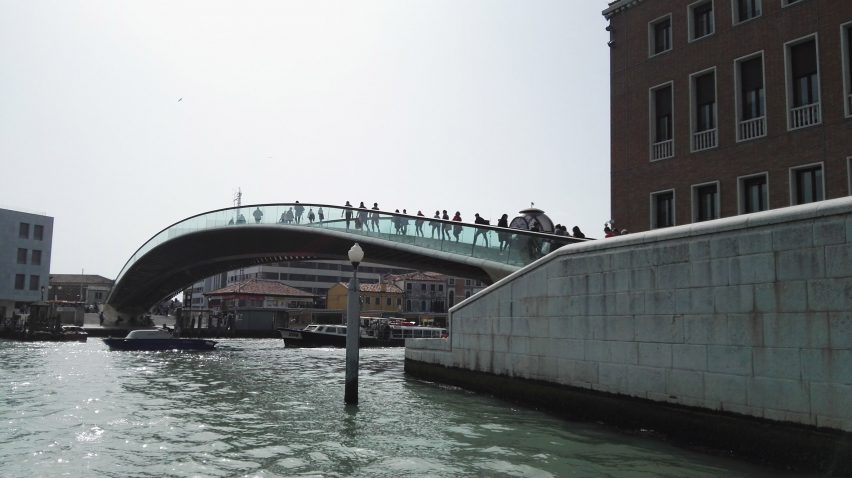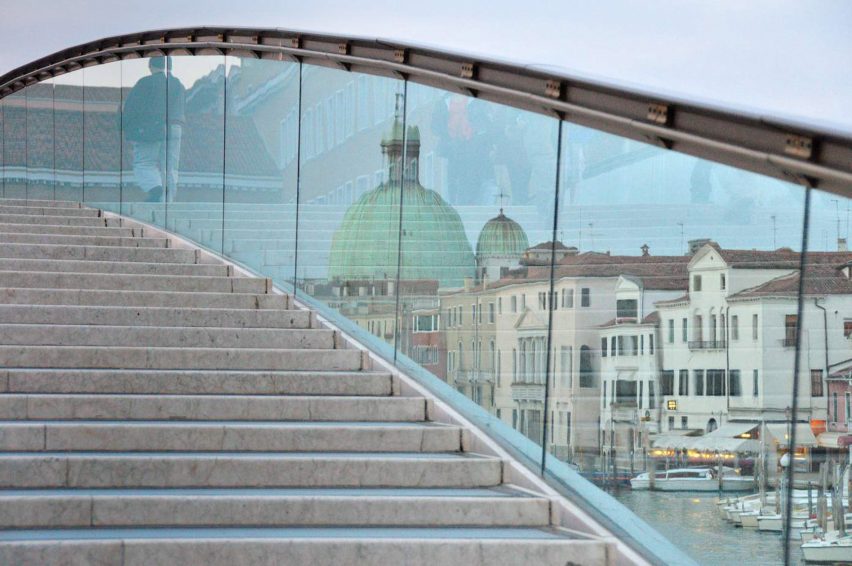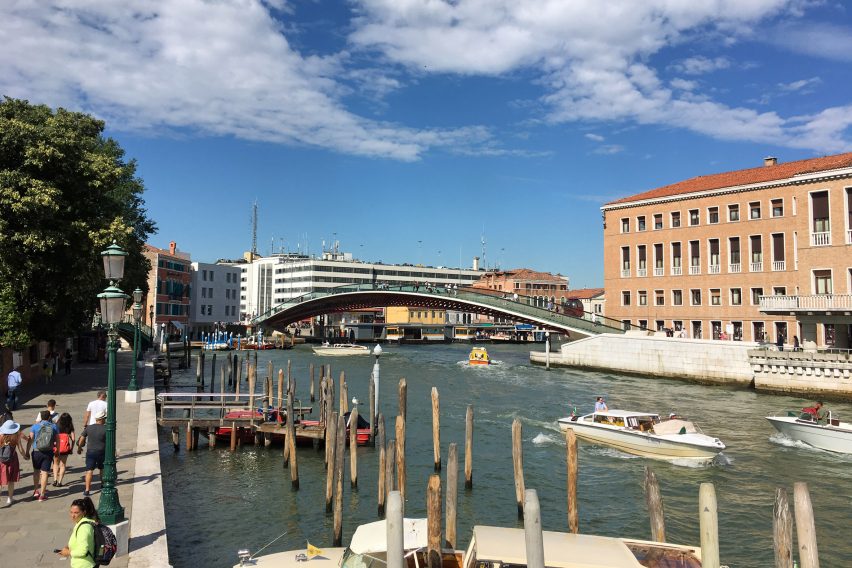
Venice to replace glass steps on Santiago Calatrava-designed bridge amid "almost daily" falls
The city of Venice is set to replace the glass floor of Santiago Calatrava's Ponte della Costituzione bridge over the Grand Canal with stone due to the high numbers of pedestrians slipping and falling.
The Spanish architect's 94-metre Ponte della Costituzione – Constitution Bridge in English – opened in 2008 and is made from steel and glass.
Venice's municipal authority has now decided to allocate €500,000 to replace the bridge's tempered-glass treads with trachyte stone in order to make it safer for pedestrians, as reported by the New York Times.
Francesca Zaccariotto, a councillor with responsibility for public works, told the newspaper that the action is intended to prevent "almost daily" falls.

"People hurt themselves and they sue the administration," she said. "We have to intervene."
In a letter shared with Dezeen, which was sent shortly before Christmas by Calatrava's office to the mayor of Venice, Luigi Brugnaro, Calatrava's studio expressed support for the plan and offered to assist with the design.
"Given the tradition of beautiful stone patterns already present in your beautiful city (such as those on the Piazza San Marco and within the Basilica di San Marco), the idea of giving such a transformation also an artistic touch is something that we would like to propose for this transformation," the letter said.
"Mr Calatrava would be more than happy to work out a proposal pro bono should you be considering this appropriate."
Plan to replace glass tiles awaits approval
City officials have previously tried to reduce accidents on the Ponte della Costituzione with resin and non-slip stickers, while during wet weather last month signs appeared on the bridge advising pedestrians to keep off the glass tiles.
The plan to replace the paving with stone is still subject to structural tests and must be approved by Venice's architectural authority.
In the letter to the mayor, Calatrava's office said there is a "realistic chance that the extra load of the stone pavers could be supported by the current structure".
It added that the bridge's original glass paving "consisted of an anti-slippery upper surface that complied with all local regulations."
However, it said that "the use of the bridge with some inadequate elements and even some acts of vandalism resulted in the fracture of numerous pieces of the original glass, that unfortunately had subsequently been replaced with other inappropriate glass panes".
The glass-and-steel curved footbridge is heavily used by tourists, due partly to its close proximity to Venice's main train station.
There are around 400 bridges in Venice, with Ponte della Costituzione only the fourth to be built on the Grand Canal since the 16th century.
Calatrava was commissioned to design the structure in 1999, with the project subject to delays and ballooning costs during construction. The bridge has been hit by repeated controversies since it opened.
It was criticised for the lack of wheelchair access, despite the architect having initially proposed to incorporate a stairlift in his design, leading to a mobility lift being built alongside the bridge in 2013.

But the lift, a €1.5 million cable car not designed by Calatrava, has since been closed and dismantled over complaints that it was too slow and unbearably hot in the summer.
In 2019, the Court of Auditors in Italy fined Calatrava €78,000 for negligence during the design of the bridge, accusing the architect of "gross negligence" and being responsible for decisions that led to the project being over budget and incurring higher-than-anticipated maintenance costs.
Calatrava has designed more than 40 bridges, including the Alamillo Bridge in Seville, Bac de Roda Bridge in Barcelona and the Jerusalem Chords Bridge, but the Ponte della Costituzione is not the first to have problems with slipperiness.
A non-slip carpet was installed across the deck of the architect's Zubizuri bridge in Bilbao over concerns about its slick glass tiles.
"Ponte della Costituzione has been highly praised by the city of Venice and its users since opening in 2008, becoming one of the most beautiful bridges in the world," Calatrava's office said in a statement.
"In the current situation, our office supports the municipality's substitution of glass panes for trachyte stone paving slabs, consistent with the bridge design and the surrounding cityscape to maintain its beauty and functionality."
The photography is by Mario Roberto Durán Ortiz